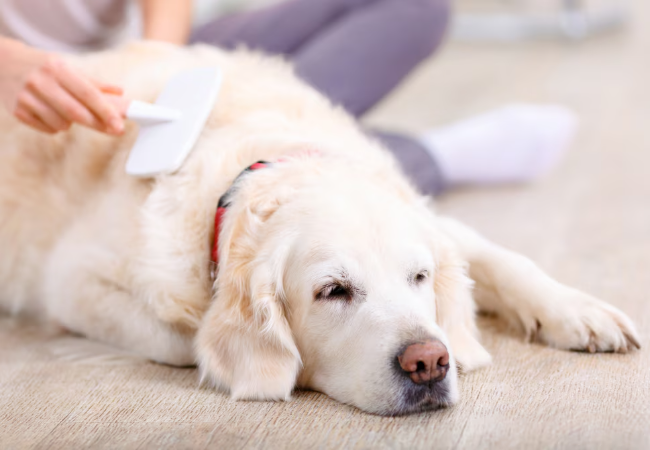How to Calm Your Dog Naturally (2025): Vet‑Approved Tips for a Happy, Balanced Pup 🌿🐶

In this article
How to Calm Your Dog Naturally (2025): Vet‑Approved Tips for a Happy, Balanced Pup 🌿🐶
By Dr. Duncan Houston BVSc
🔍 Understanding Canine Stress
Dogs experience stress from changes, loud noises, separation, health issues, or insufficient stimulation. Left unchecked, this can lead to destructive behavior, reactivity, or health problems. Good news: many calming solutions work effectively without medication.
🕒 1. Maintain a Consistent Daily Routine
- Stick to regular feeding, walk, playing, and bedtime times.
- A consistent schedule helps reduce uncertainty and anxiety.
🏃 2. Exercise & Mental Stimulation
Physical activity and mental challenges boost endorphins and lower stress:
- Daily walks, playtime, fetch, or scent work.
- Puzzles, snuffle mats, and interactive treats support calm focus.
🎵 3. Music or White-Noise Therapy
Soft music or white noise masks startling sounds (thunder, fireworks) and helps relax dogs during stressful times.
🧥 4. Use Anxiety Wraps & Pheromones
- Weighted wraps (like Thundershirt®) ease anxiety via gentle pressure.
- Pheromone products (e.g., Adaptil® collars, sprays, diffusers) mimic soothing maternal scents.
💆 5. Massage & Touch Therapy
Gentle massage and calm petting reduce muscle tension and signal safety. Learning calming body language boosts bonding.
🌿 6. Natural Supplements & Herbal Remedies
- Chamomile, L‑theanine, and L‑tryptophan support calm behavior.
- Alpha‑casozepine (Zylkene®) offers gentle anxiety relief.
- Low-dose melatonin helps with sleep or transient stress episodes.
- Choose NASC‑approved products and consult your vet—quality matters.
🏠 7. Create a Safe, Calming Space
- Provide a cozy den or mat with your scent for relaxation.
- During fireworks, move them indoors with white noise or calming music.
🧩 8. Use Behavioral Games
Simple, calm puzzles like treat scavenger hunts or scatter feeding encourage relaxed focus and reduce stress.
🌱 9. Minimize Anxiety Triggers
- Avoid stressful situations if possible—walk at quieter times, skip dog parks during fear episodes.
- Desensitize slowly to triggers with positive reinforcement over time.
📅 10. Know When to Consult the Vet
If natural strategies don’t help, see your vet. They may recommend medication or behavior therapy to address underlying issues.
📋 Dr Houston’s Natural Calming Checklist
- ✔️ Consistent routine for feeding, exercise, sleep
- ✔️ Daily exercise and puzzle enrichment
- ✔️ Calming sounds—music or white noise during trigger events
- ✔️ Anxiety wraps (Thundershirt®) and pheromone diffusers
- ✔️ Use natural supplements after vet approval
- ✔️ Safe den for retreat during storms or fireworks
- ✔️ Gentle massage and petting to signal safety
- ✔️ Monitor progress and escalate to vet help if needed
- 📱 Visit Ask A Vet for tailored calming support anytime
🌟 Final Thoughts
A calmer dog starts with understanding what stresses them and using gentle, natural methods to foster confidence and comfort. Consistent routines, exercise, enrichment, soothing sounds, massage, anxiety wraps, pheromones, and vet-approved supplements are all effective tools. And remember—if challenges persist, professional help is just a message away. 🌱🐾
Need help selecting supplements, designing enrichment games, or mastering massage techniques? Visit AskAVet.com or download the Ask A Vet app—real vet support for natural calming. 📱🐶






